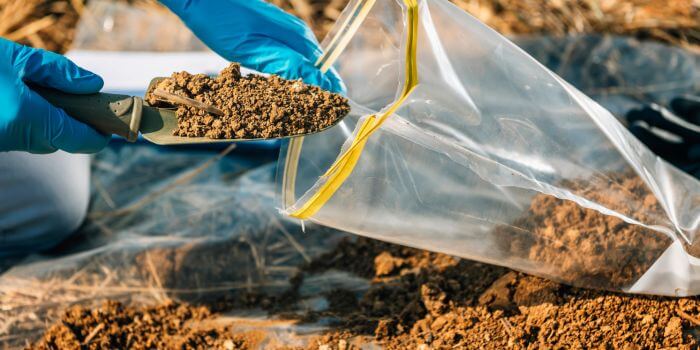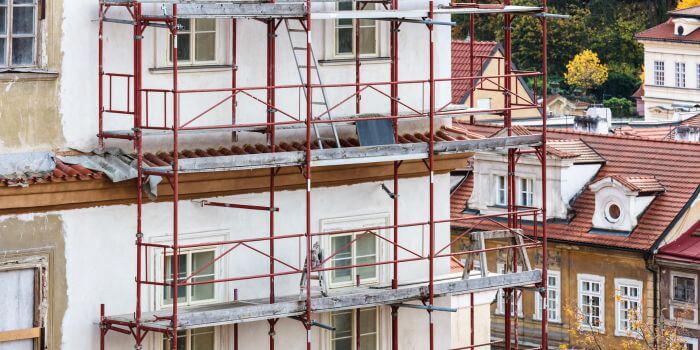Table of Contents
Historic Preservation
Owning a historic property is not merely an act of preservation but a commitment to the stewardship of a cultural legacy.
These properties often come with unique architectural features and historical importance.
However, the charm and significance of older homes can sometimes be marred by hidden environmental risks such as soil contamination or outdated oil tanks.
Balancing the dual roles of a custodian of history and an eco-responsible citizen can be challenging but essential.
Soil Assessments: The First Step to Environmental Responsibility

Historic properties can come with a variety of unknowns in the land they occupy. One essential step to identify potential environmental risks is to conduct soil assessments.
Soil assessments can reveal the presence of harmful chemicals or materials, such as lead or asbestos, often used in older buildings.
Specialized services provide soil borings to analyze the composition of the soil in a non-intrusive way, thereby preserving the integrity of the historic site.
By visiting reliable sources like SimpleTank, you can get professional assistance in soil assessments and soil borings, ensuring that your historic property is not just aesthetically intact but also environmentally safe.
Oil Tank Removal: A Historical Challenge
One of the common challenges faced by owners of older properties is the presence of underground oil tanks.
These were often installed decades ago when environmental awareness was not as prevalent.
Over time, these tanks can corrode and leak, contaminating the soil and posing a hazard to the environment.
Removing these tanks responsibly is crucial. The removal process involves several steps, such as draining the tank, excavating the site, and then safely removing the tank itself, followed by remediation of the site.
Ethical Renovations

Older buildings often require renovations to meet modern safety standards and to preserve their structural integrity.
While upgrading the property, it’s vital to use environmentally friendly materials and practices.
These could include using reclaimed wood, opting for low-VOC paint, and installing energy-efficient systems.
Regulatory Framework
Many countries have a regulatory framework that outlines the steps that must be taken to protect the environment while preserving historical sites.
Often these rules include mandatory soil tests and hazardous material assessments. Violating these regulations can not only result in hefty fines but also jeopardize the historical status of the property.
Therefore, it’s crucial to understand and follow these guidelines meticulously.
Collaboration with Local Authorities and Organizations
Coordinating with local environmental agencies and historic preservation societies can offer invaluable guidance.
These organizations often have data, tools, and expertise that can help historic property owners fulfill their roles responsibly.
The Role of Community
Community involvement can be a strong pillar in preserving history while adhering to environmental standards.
A knowledgeable and engaged community can provide both social and financial support.
Crowd-funding campaigns for soil remediation or the responsible removal of hazardous materials like oil tanks can be an excellent way to share the responsibility.
The Importance of Public Awareness

An often overlooked but critical aspect of preserving historic properties responsibly is raising public awareness.
When the community is educated about the environmental risks and what they can do to help, the load can be lightened for historic property owners.
Workshops and public awareness campaigns can address issues like waste management, soil remediation, and how to responsibly deal with old structures.
This collective approach strengthens the community’s bond with its historical roots and heightens everyone’s sense of responsibility toward the environment.
Eco-Friendly Technologies and Innovations
In today’s fast-paced technological advancements, there are numerous ways to retrofit an old property with eco-friendly alternatives.
Solar panels, for example, can be a fantastic way to harness clean energy without altering the property’s exterior look significantly.
For interior heating, energy-efficient systems can replace old, environmentally harmful mechanisms without losing the vintage appeal.
Innovations like these help maintain the character and historical value of the property while aligning with modern environmental requirements.
Grants and Financial Assistance
Financial constraints can be a deterrent when wanting to adhere to both historical preservation and environmental standards.
Thankfully, many governmental and private organizations offer grants for property owners willing to take these steps.
These grants can cover everything from soil tests and soil borings to full-scale oil tank removal and replacement with eco-friendly alternatives.
It’s worth investing time in researching what kind of financial assistance is available for your property and how to apply for these grants.
Case Studies: Learning from Examples
Looking at case studies can provide a roadmap for what to do—and what not to do—in maintaining a historic property.
Learning from the experiences of others can help you anticipate problems and prepare solutions in advance.
Many times, these case studies are documented in academic papers, municipal records, or even popular media, offering a comprehensive view of the challenges and triumphs of combining history and environmental responsibility.
Final Thoughts
Preserving a historic property requires a well-balanced approach that respects both the past and the future.
As we become more aware of the environmental impact of our actions, it becomes crucial to adapt and change our methods of preservation.
Soil testing, oil tank removal, and other environmental practices can no longer be afterthoughts but rather must be integrated into the overall maintenance and restoration plans for these properties.
By committing to eco-responsible practices, leveraging technological advancements, and actively engaging with local communities and authorities, historic property owners can fulfill their duty towards cultural preservation and environmental sustainability.
This marriage of history and ecology ensures that future generations will inherit a world rich in both cultural heritage and natural beauty.
So, as you dive into the fulfilling but challenging world of historic property ownership, remember that your actions today will echo into the future.
Make those echoes as harmonious as possible by integrating responsible environmental practices into your preservation efforts. It’s not just a responsibility but a legacy that we owe to future generations.
Also, Read
What is A Manhole?|Types of Manholes|Purpose of Manhole|Components of Manhole
Types of Sewerage System – Combined, Separate, Partially Separate
What are the common Impurities In Water?
Water Pollution and Sources of Water Pollution